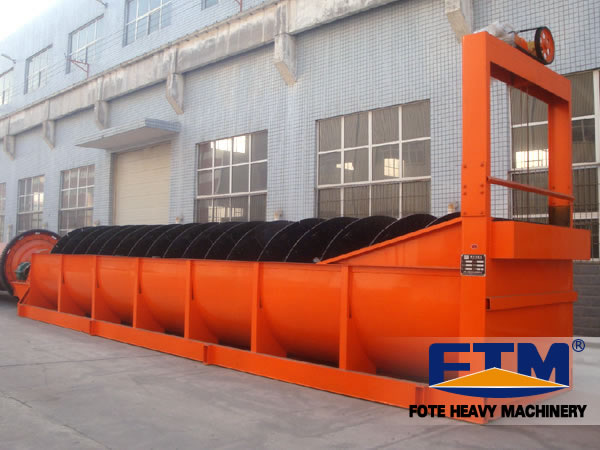
As one of the mineral processing machines,
the spiral classifier is a kind of mechanical grading classification equipment.
With a spiral classifier, solid particles of different proportions deposit in
the liquid at different speeds. There are many elements affecting the
separation effect of a spiral classifier, which are as follows:
In
general, the more mud content or fine grain of the material there is, the
higher the pulp viscosity is, the lower the setting rate of the ore particles
in the pulp is, the bigger the overflowing product’s particle size is. In this
case, in order to guarantee the overflowing product’s fineness can meet the
demand, some water can be added to the machine to lower the pulp’s density. If
there is less mud content of the material or it has been in desliming process,
the pulp’s density should be increased appropriately, which can avoid too much
fine grain is sent to the ball mill again.
Fote also finds that the smaller the inclination of the classifier’s
tank is, the bigger the setting area is, the finer the overflowing particles
are, the more fine grain of the returned sand there is. Contrarily, the bigger
the tank’s inclination is, the smaller the setting area is, the more coarse the
overflowing particles are, the less fine grain of the returned sand there is.
After the installation, the inclination of the classifier can’t be changed.
Besides, the spiral’s rotating speed can also affect the classifier’s
separation effect. The faster it rotates, the higher the machine’s production
capacity is. However, in this case, the stronger the spiral’s stirring effect
on pulp is, the more coarse grain of the overflowing product there is. The
spiral classifier is applied in the coarse grinding cycle. To get finer grain,
the spiral’s rotating speed should be slow.